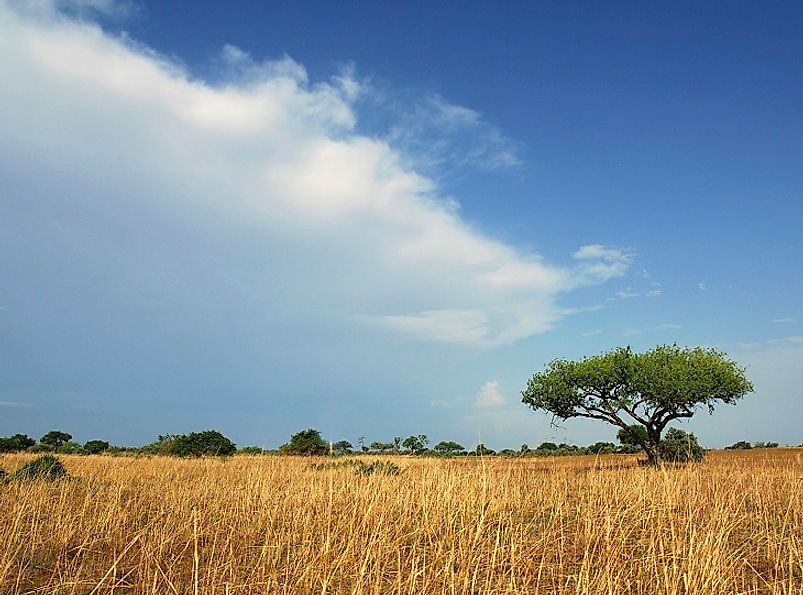Where Is The Adamawa Plateau?

5. Description
The Adamawa Plateau is shared by the African nations of Cameroon, Nigeria, and the Central African Republic. Nigeria is on its western flank, while the Central African Republic is on its eastern flank. Its chief city is Ngaoundere, which is one of the regions of the are in Cameroon. The plateau divides the savanna north from the southern forests of Cameroon. The major population in this area, the third largest region of Cameroon, are the Muslim Fulbe group of people. The plateau is wild, and its population is thinly distributed across vast area. The Gbaya people and the Tikar peoples also call the plateau their homes.
4. Historical Role
The Paleo-Sudanese groups of people were among the earliest inhabitants of the Adamawa Plateau region, though later Neo-Sudanese people who migrated to the area absorbed them into their own tribes in the early 9th Century AD. Then. in the 14th Century, the Fumbina arrived, and introduced Islam. The semi-Bantus and other tribes from Chad also came following this major event. Others, including the Bantus, arrived in the succeeding centuries, coming to the area all the way until the 17th Century. Then, the semi-Bantus moved farther south to the headwaters of the Mbam River, while the Bantus migrated east, where they founded the settlements of Nggaoundere, Banyo, and Tibati. At the same time, the Sudanese peoples migrated farther north. Then, the Muslim Fulbes arrived from Nigeria in the 17th Century, further asserting the cultural role of Islam in the region.
3. Modern Significance
Tourism is virtually nil in the Adamawa Plateau area, as it primarily serves as a transit point by train from the south of the plateau to its northern portions. Although, sometimes those tourists with cultural interests in the area come to explore some of its key points of interest. The plateau offers waterfalls depending on the season, as well as cave explorations and sights of crater lakes. Tourists can also visit palaces owned by local rulers by appointment with travel agencies. The Fulbe population dominates the other minor tribes in the area, of which many are still nomadic. Racism and discrimination may be the rule in some areas, however, as the Muslim Fulbe do not tolerate non-Muslims to a certain degree.
2. Habitat and Biodiversity
The geological composition of the Adamawa Plateau varies considerably, possessing an abundance of rocks including mica, gneiss, schists, metamorphic rocks, crystalline rocks, and granite. Volcanic basalt covers certain areas as well. The general habitats of the plateau range from savannas and forests to rivers and rugged grasslands. Ferns, bamboos, evergreens, and deciduous trees alike dominate the plateau's forests. Scrubby bush and grass also persists in the savanna and other grassland areas. Many of the major rivers of Cameroon originate from the Adamawa Plateau, and go on to drain into Lake Chad, Niger River, and the Atlantic Ocean. Crater lakes can also be found in the region, forming as a result of volcanoes collapsing and then filling with rainwater. Flora and fauna of Adamawa have a range as diverse as the landscape. Here, one may find a variety of African birds, amphibians, gorillas, chimpanzees, and large game species.
1. Environmental Threats and Territorial Disputes
Conservation problems in the Adamawa Plateau largely arise from local farmers' use of agricultural lands. "Slash and burn" agricultural practices have resulted in land infertility that has led to more deforestation. As deforestation devastates the forests and savannas, the native flora and fauna lose their habitats, which in turn ultimately leads to the endangering of species and even extinction. Human interventions need to take agricultural land and maximize its production as a means of preventing further deforestation and saving the remaining habitats. The rich biodiversity of the plateau in Cameroon is threatened with poaching and illegal hunting for trophies of the native big game species. Animal and plant endemism is common in the Adamawa Plateau's rich, moist forests, so loss of these species locally could mean loss of them globally. Despite such concerns, the forests of the area are not seeing any significant conservation efforts coming into action at this time.











